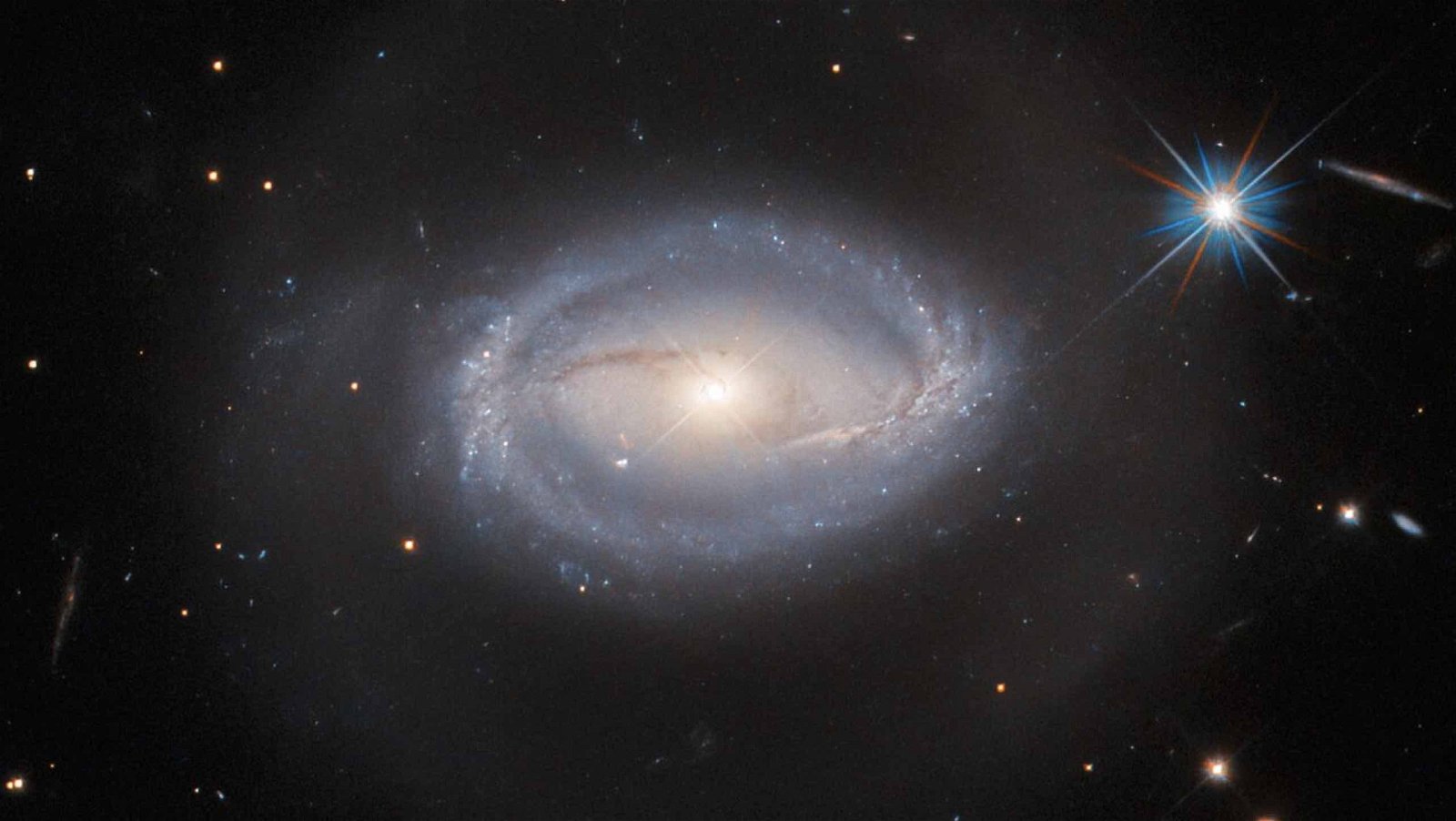Resembling an eerie cosmic eye peering toward earth from the heart of an active galactic nucleus, striking images of a celestial enigma–one so unique that it technically has three different classifications all at once–were collected by the Hubble Space Telescope.
390 million light-years from Earth within the modest constellation Lyra visible in the northern sky is Z 229-15, a class of space object that is surprisingly rare by astronomical standards.
Like a celestial jack of all trades, Z 229-15 is many things all at once: it represents an active galactic nucleus, but at the same time has also been categorized as a quasar and as a Seyfert galaxy. But how can this cosmic curiosity simultaneously resemble all three of these celestial features?
At the heart of any active galaxy is its active galactic nucleus (AGN), the compact region at the galaxy’s center with the brightest non-stellar luminosity (that is, the light within this region is not produced by stars). These non-stellar luminous regions produce emissions in a variety of different wavebands of the electromagnetic spectrum, and are the result of the supermassive black hole that exists at the core of these galaxies, which draws matter toward it, raising its temperature and releasing large amounts of energy that give an AGN its bright appearance.
Quasars, although they are also believed to possess black holes at their centers, are far-distant star-like objects which astronomers designate as a variety of AGN. Given that Z 229-15 evades simple classification and bears the qualities of both celestial objects, it is surprisingly close for a quasar.
That’s not all that makes Z 229-15 unique, however. Certain galaxies which are known for producing very high infrared emissions like Z 229-15 can possess the bright compact core an AGN is known for, while the rest of the surrounding galactic region is also observable—unlike other AGNs that are so luminous that their light literally outshines their surrounding galactic structure.
From its position in orbit, Hubble is able to detect portions of both the ultraviolet region of the spectrum, as well as some infrared like its successor, the James Webb Space Telescope, allowing it to visualize these high-infrared emissions with great clarity.
Since Z 229-15 also falls into this class of celestial objects, it technically possesses characteristics of an AGN but also contains a quasar and resembles a Seyfert galaxy all at once.
Hubble telescope imagery of Z 229-15 was recently recognized by the ESA Hubble team as its Image of the Week.
Jointly operated by the ESA and NASA, Hubble was initially launched in 1990 and carried to its current orbit around 353.5 miles above Earth. Even with the recent launch of its successor, the James Webb Space Telescope, Hubble continues to deliver high-quality imagery of the cosmos and remains an integral component of ongoing space science exploration.
Micah Hanks is the Editor-in-Chief and Co-Founder of The Debrief. He can be reached by email at micah@thedebrief.org. Follow his work at micahhanks.com and on Twitter: @MicahHanks.

